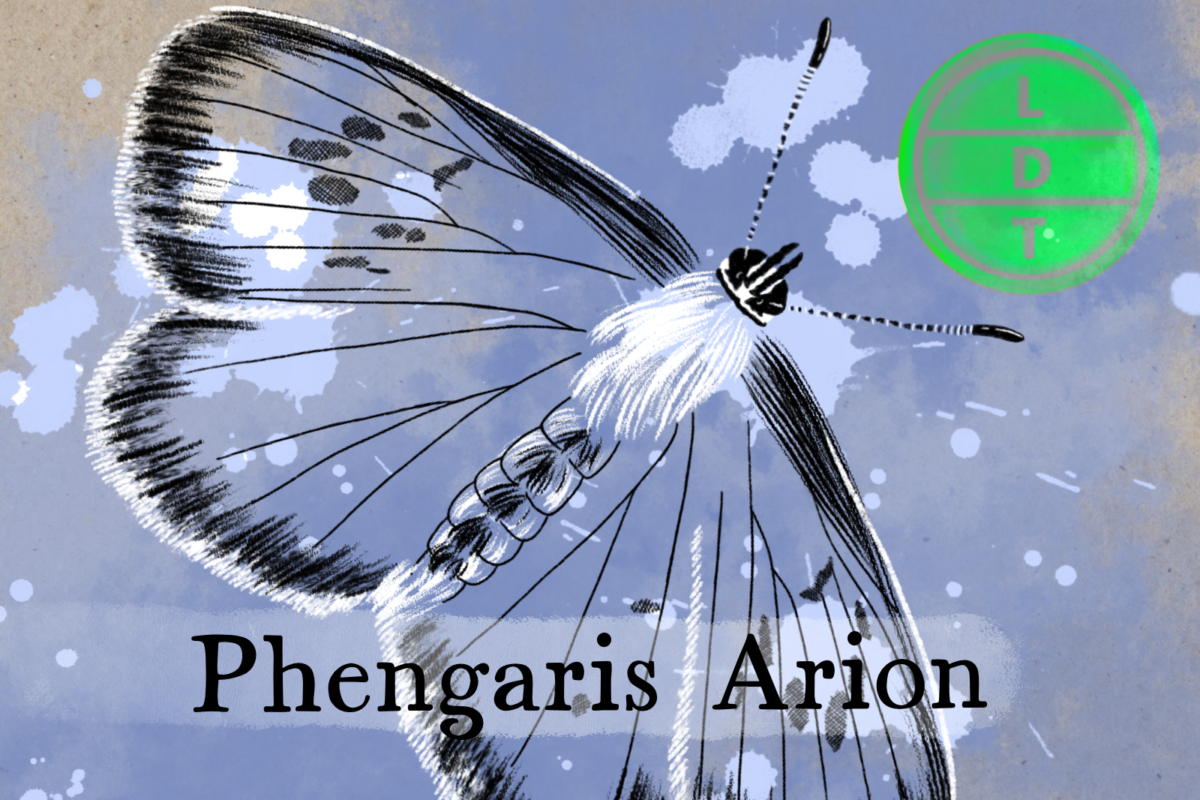“…and today we’re giving our last hope to you. Don’t give it back to me, Bitterblue. But more on that later.”
In the insect world, there are threats around every log and under every leaf. A young grub is all alone in a huge place. Worse yet, a lot of creatures think he tastes slimy yet satisfying. But the large blue caterpillar read How to Win Friends and Influence People and he knows allies are the key to success. But making sure the deal works in your favor is one way to work in Life, Death, and Taxonomy.
Description of the Large Blue Butterfly
- As a caterpillar, it looks like a mitochondrion, which is the powerhouse of the cell.
- It’s pink, it’s pill-shaped, and it’s hairy
- Actually, it’s kind of a gross flesh color.
- Its body is segmented and it has a little black head at the end.
- As a beautiful butterfly, the Large Blue is pretty large and also very blue.
- It has four bright blue wings rimmed with black. It also has black spots all over, but mainly on the top two wings.
- Its body is fuzzy and also very blue: tipped with two long antennae
Measure Up
Welcome to the beloved Measure Up segment. The official listener’s favorite part of the show! The part of the show when we present the animal’s size and dimension in relatable terms through a quiz that’s fun for the whole family. It’s also the part of the show that’s introduced by you when you send in audio of yourself saying, singing, or chittering the words Measure Up into ldtaxonomy at Gmail dot com. We don’t have a new Measure Up intro!
- Sea lions
- Baby bears
- Donkeys
- Musk ox
Fast Facts about the Large Blue Butterfly
- Range: Lives all over Eurasia with the exception of the southern Stans, India, and Southeast Asia
- Diet: As a very hungry caterpillar, it loves to eat Thyme leaves and it switches to the hard stuff (flowers) as an adult. Leaves are the gateway snack. However, in their fourth instar of larval development, they also eat ant grubs when the situation arises, which is more often than you might think.
Length
- 1.5 inch (13 mm)
- Around 3,083,520 large blue butterflies go into the length of what British historical landmark?
- Hint: This landmark is the largest piece of Roman architecture in England, dating back to 112 AD.
- Hadrian’s wall is 73 miles (117.5 kilometers).
Larval Life Span
- 9 months
- A little more than 1,041 blue butterfly larval stages go into what historical European war?
- Hint: This is the longest continual war on record. It began with the Battle of Covadonga, in which rebels were led by Pelagius of Asturias–not to be confused with Darth Pelagius the Wise or Pelagius the theologian that denied original sin.
- The Spanish reconquista lasted from 711 to 1492, making it a 781 year war.
Major Fact: Larval Marvel
Ants are usually a major danger in the insect world for a young caterpillar. But blues have reached an understanding with the ants.
Lycaenids have developed several ways to live with ants and even benefit from their presence. Blue larvae secret a sweet substance that the ants just can’t resist. They combine this nectar with chemical signals that appease the ants, allowing them to move unmolested amongst the colonists.
This chemical feat is accomplished in three ways:
- A single celled organism called a pore cupola organ which produces attractive substances to ants. All lycaenids have this gland.
- A large gland that produces a thick sugary liquid called a dorsal nectory organ, or the more catchy term, the honey gland.
- More complex organs called dorsal eversible organs which are long tentacles with brightly colored spikes that emit chemicals. We aren’t sure if these chemicals repel ants or attract them.
However, it’s not just pay-off money for some species of blues.
Ants will protect and tend to some of these larvae in order to maintain their supply of the sweet nectar. In this case, ants and larvae enjoy a beneficial relationship.
But my favorite example of this larval marvel is when the larvae uses the nectar and the chemical messages to lull the ants into a false sense of security and then they prey on the ants themselves.
Ending: So stay beautiful, take some thyme, and get someone else to raise your kids like the large blue butterfly here in LDT.

